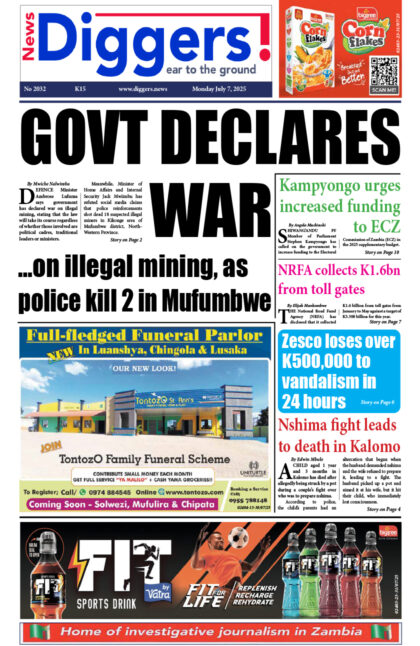THE Ministry of Finance has revealed that the country recorded a 43 percent increase in the use of public transport in 2019 due to the increased fuel pump price which hiked the cost of travel for private motorists.
And the report stated that the wholesale and retail industry accounted for the highest share of GDP at 22.4 percent with the mining sector contributing 13.2 percent in 2019.
According to the 2019 annual economic report, the use of public transport increased because it was a cheaper alternative mode of commuting.
“The number of passengers transported by registered public service motor vehicles increased by 43.0 percent to 81,864,720 in 2019 from 57,230,580 in 2018. The increase was explained by the opening of new routes both local and intercity bus terminus. In addition, the upward adjustments of fuel pump prices, which increased the cost of travel for private motorists, also made it cheaper to use public transport as an alternative mode of commuting,” the report read.
The report revealed that the subdued GDP growth which was recorded at 1.9 percent for 2019 was due to the lower growth in agriculture and mining sectors which contracted by 7.5 percent and 5.5 percent, respectively.
“Preliminary data showed that real GDP growth in 2019 based on three quarters was 1.9 percent compared to 4.0 percent recorded in 2018. The outturn was largely attributed to lower growth in agriculture and mining sectors which contracted by 7.5 percent and 5.5 percent, respectively. In addition, the electricity sub-sector recorded lower growth due to reduced electricity generation which also affected all other sectors of the economy. This notwithstanding, the information and communication sector grew by 18 percent, while the wholesale and retail sector grew by 4.3 percent. In terms of contribution to GDP, the wholesale and retail industry accounted for the highest share of GDP at 22.4 percent. This was followed by mining and quarrying which accounted for 13.2 percent, while the construction, manufacturing and transportation and storage sectors respectively accounted for 8.6 percent, 7.7 percent and 7.3 percent of GDP in 2019,” it read.
The report, however, highlighted the growth of the tourism sector at 7.1 per cent from the 1.7 per cent recorded in 2018.
The growth was attributed to the increased marketing of Zambia as a tourist destination through various platforms with increased international arrivals at airports and land based ports of entry.
“Preliminary data indicates that the tourism sector grew by 7.1 percent compared to 1.7 percent in 2018. The growth was attributed to increased marketing of Zambia as a tourist destination through various platforms such as fairs, exhibitions, roadshows and hosting of international conferences, as well as provincial expositions. The utilization of digital marketing and the eVisa online services also contributed to the growth. Preliminary data indicates that international tourist arrivals increased by 12.9 percent to 1,209,898 in 2019 from 1,072,016 in 2018 (see Table 2.13). International tourist arrivals at Harry Mwanga Nkumbula, Kenneth Kaunda and Simon Mwansa Kapwepwe International Airports increased by 9.6 percent, 6.0 percent and 4.5 percent, respectively. Mfuwe, however, recorded a decrease of 29.9 percent. Similarly, land-based ports of entry Jimbe, Mokambo and Nsumbu recorded notable increases of 377.7 percent, 148.1 percent and 378.8 percent, respectively. Kasumbalesa, however, recorded a decrease of 12.6 percent despite it being traditionally a high traffic border in the region. This was on account of rerouting of traffic from Kasumbalesa to Jimbe and Mokambo,” it read.
However, despite the increase in tourists, visits to the Victoria Falls decreased while visits to the Mutanda, Unawake and Ntumbacushi Falls increased by 49.7 percent, 29.4 percent and 13.5 percent, respectively
“Tourist visits to waterfalls generally decreased by 22.3 percent to 173,103 visitors from 222,713 visitors in 2018. Visits to Mutanda, Unawake and Ntumbacushi Falls increased by 49.7 percent, 29.4 percent and 13.5 percent, respectively, while visits to Nyambwezu, Kundalila, Chipoma, Lufubu and Victoria Falls decreased by 63.4 percent 50.4 percent, 39.7 percent 30.2 percent and 24.0 percent, respectively,” it revealed.
And the report revealed that there was in increase in the mobile penetration rate which increased to 99.1 percent with MTN Zambia limited continuing to dominate the market with a market share of 43.7 percent of total mobile subscriptions
“As a result of the increase in mobile network subscription, the mobile penetration rate which represents the number of mobile subscriptions over total population increased to 99.1 percent from 91.6 percent in 2018. In terms of the mobile subscription market, MTN Zambia Limited continued to dominate with a market share of 43.7 percent of total mobile subscriptions. Airtel Zambia Limited and Zamtel had market shares of 33.9 percent and 22.4 percent, respectively,” the report read.
The report further revealed that in the year under review, severe malnutrition increased to 2.7 per 1000 population from 0.5 per 1000 population and underweight prevalence among children 0 to 23 months increased to 0.8 percent from 0.6 percent in 2018.
Meanwhile, it was revealed that in 2019, the country recorded a 418 percent increase in fish and fish products export quantities.
“During the year under review, the country recorded a 418 percent increase in fish and fish product export quantities from 532 Mt in 2018 to 2,756MT in 2019 as shown (see Table 2.6). The exports were valued at K1.46 billon compared to K8.53 million the 2018. The Democratic Republic of Congo continued to dominate the export market for Zambia’s fish and fish products. Other common export destinations Fresh frozen or chilled Tilapia constituted the largest exported fish as well as dried or smoked Tilapia. On the other hand, the quantity of imported fish and fish products dropped from 103,202 Mt to 95,536 Mt between 2018 and 2019 representing a 7.4 percent reduction. The imports valued at K50.14 million compared to the 2018 figure of K1.16 million. The major import sources were Namibia, China, Zimbabwe and South Africa,” read the report.



















